|
  |
|
Page 2 |
Newsletter 128 Spring 2020 © Hampshire Mills Group |
HMG to MAT: Archiving for Beginners
Ashok
Vaidya
|
|
It all starts with good
intentions. HMG has been helping transfer the
records and files collected over many years by Tony
and Mary Yoward to the Mills Archive Trust in
Reading. Tony kindly made clear that this is where
he wanted the thousands of photos and files to end
up and eventually be made accessible to the public.
But the physical
transfer of boxes is only the first step. Contents
need to be examined, catalogued, treated if
necessary to preserve them, and put into storage
suitable for a long term archive. To make them
accessible for the widest audience scans of the
images and documents must be made and uploaded to a
searchable database on the internet.
That is the theory!
What I want to do in this article is to describe
what it means in practice.
|
|
So
let us start with a box. A box of seven three-ring
binders. Four are labelled Hampshire Mills 1–170+.
These are the photos, maps, and visit reports on
every one of the Hampshire Mills. We (Eleanor Yates,
Dave Plunkett, and myself) have already catalogued
the folders that Tony had assembled on each mill
with research on their history. |
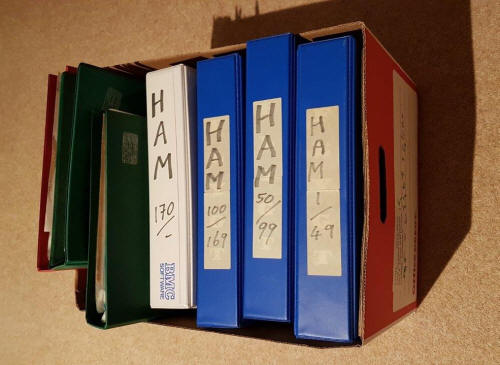
|
|
Opening up a binder we see what is inside. Photos
for each mill are carefully laid out in precise
order. That makes life easier for cataloguing. Visit
reports, articles, and press cuttings likewise.
There is some duplication with the material in the
folders for each mill, so some sorting is needed.
|
 |
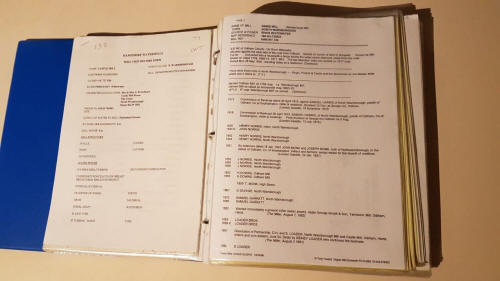 |
|
But
the archive Tony created has another side to it as
well. In addition to the physical items there is a
large database of documents and photos that he had
built up on his computer. And he asked me to hold a
copy of this for the Hampshire Mills Group.
Most
mills have a section with photos which are different
to the printed ones.
So
to do a proper job of preparing all this material
for archiving and cataloguing and making available
on the internet, I need to bring together all the
source material and work on it as a single entity.
|
|

1. This means
scanning all the prints.
Then filing them in new archival quality plastic
folders that will not harm them in the years to
come. |
|
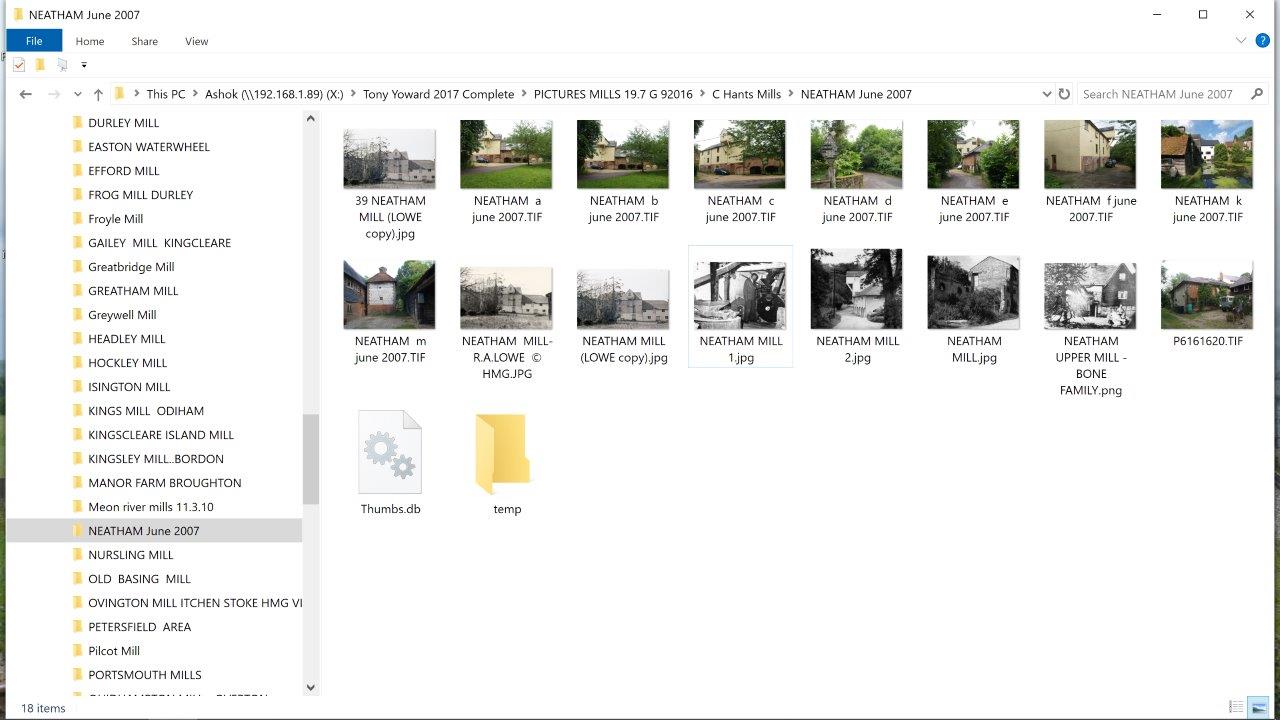
2. Searching Tony’s database for the relevant
digital photos. |
|
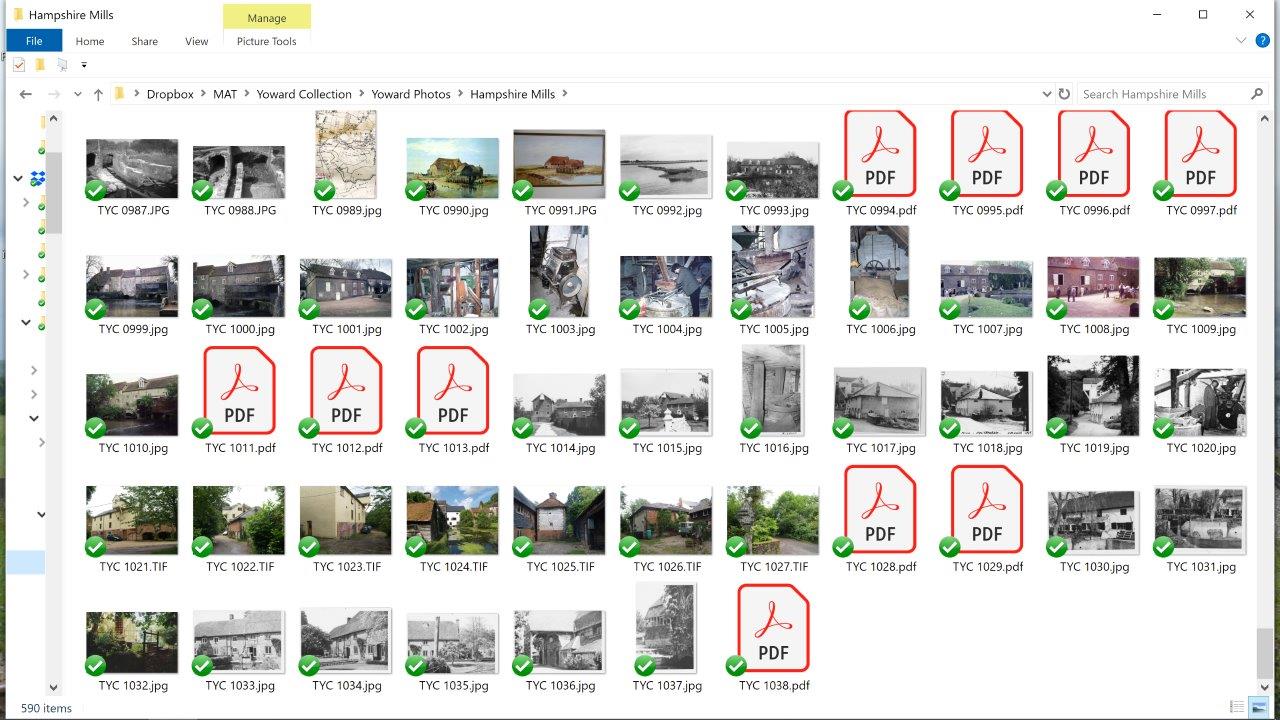
3. Merging the digital photos with scans of the
printed photos.
(Editor
- the two pictures of Lower Neatham mill which
feature in the two panels are enlarged below)
|
|
.jpg)
Arthur Lowe |
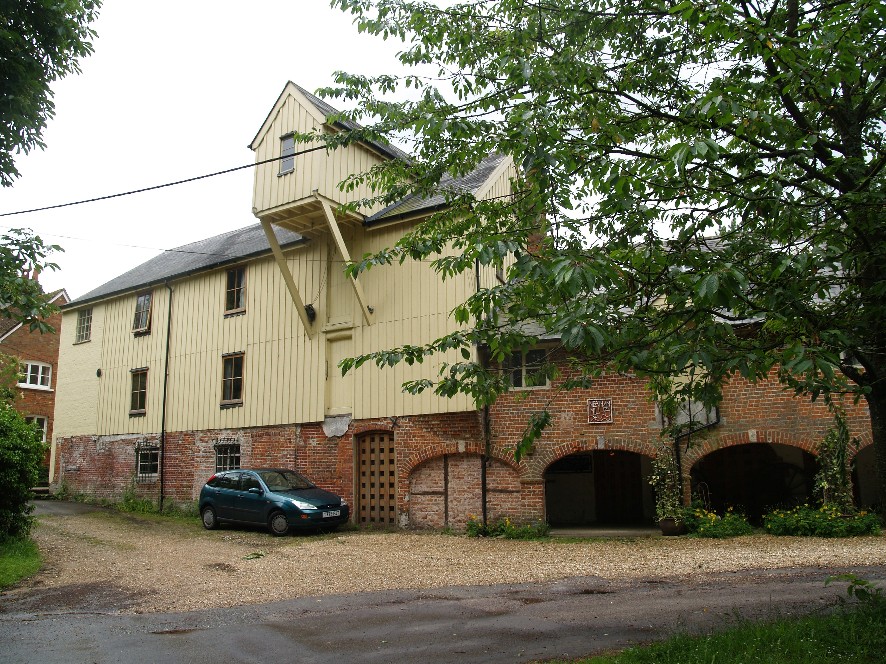
Tony Yoward, 2007
|
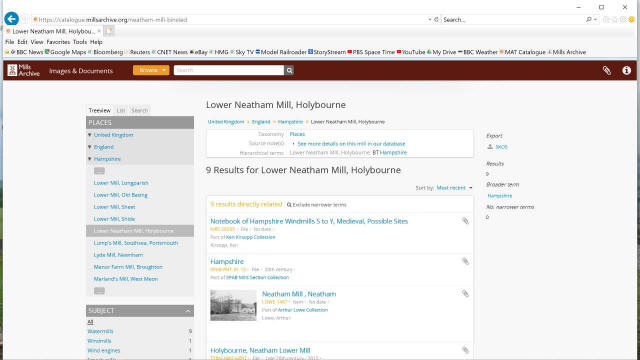
4. Checking what already exists on the Mills Archive
Database to avoid duplication.
|
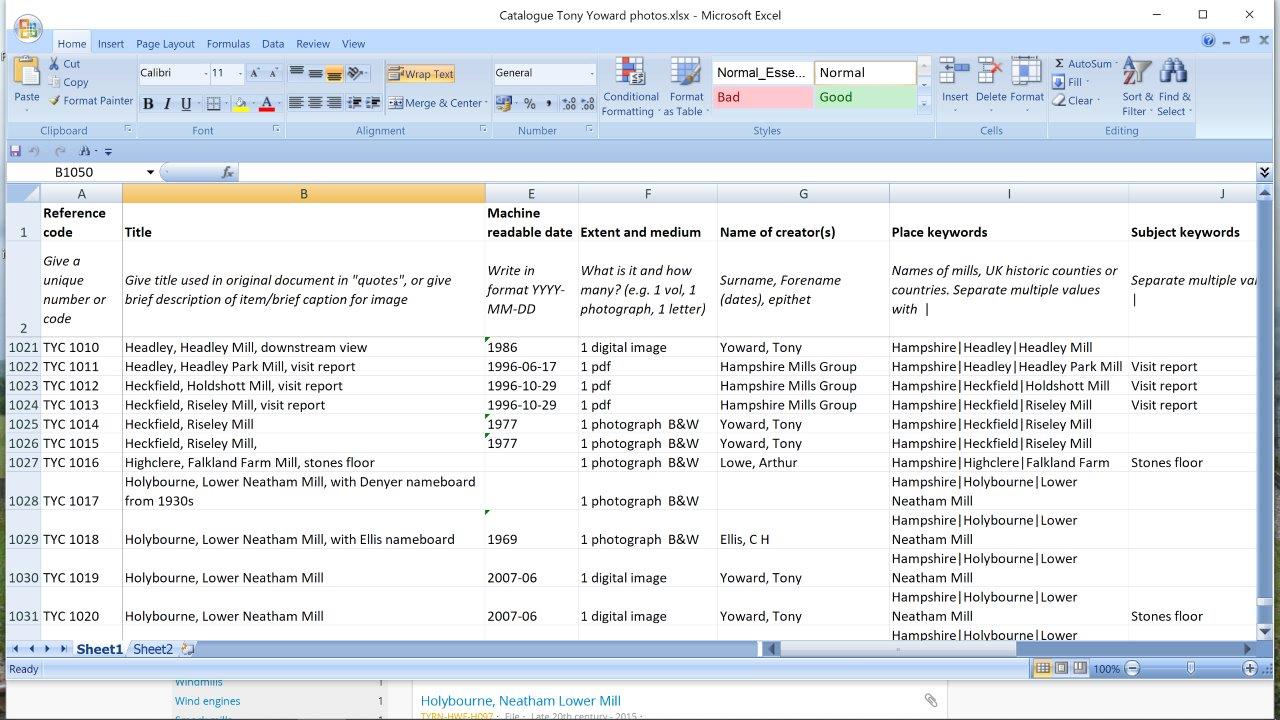
5. Giving each image or document a reference number
and labelling the digital
and physical image and adding a catalogue entry.
|
|
This would give details about what it is, who and
when was it taken, and any other relevant
information. Also finding out from others if
possible where there is missing information.
So far I have done two binders – the first 100
Hampshire Mills. I have added 588 images to the
catalogue, 260 from Tony’s database, and 328 that I
have scanned. It is taking on average about three
minutes per image – or 30 hours so far.
P.S.
All done now ! Dec 2019.
|
  |
|
|
